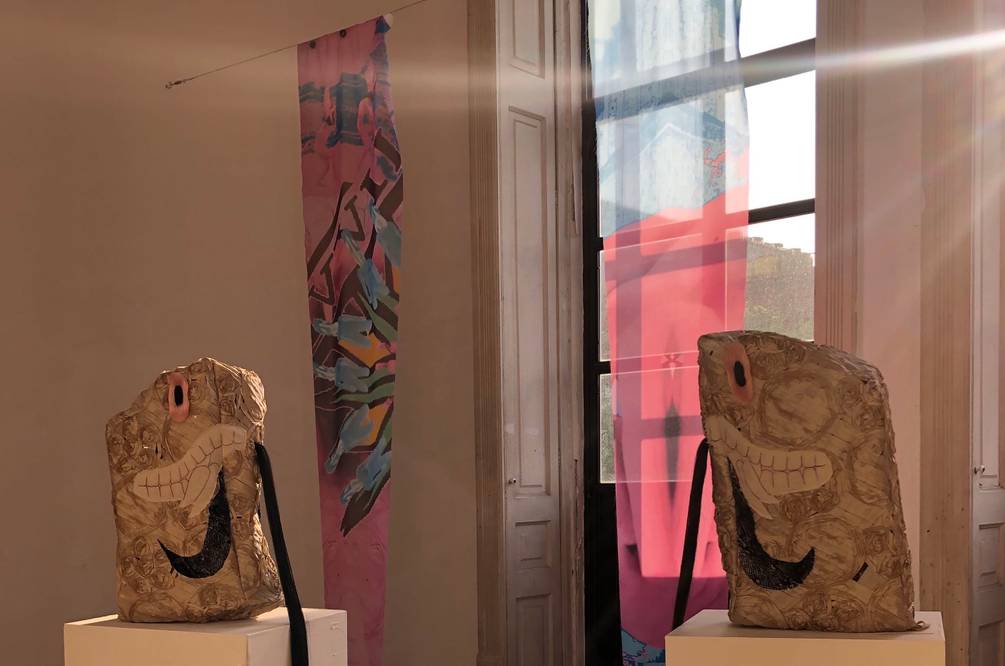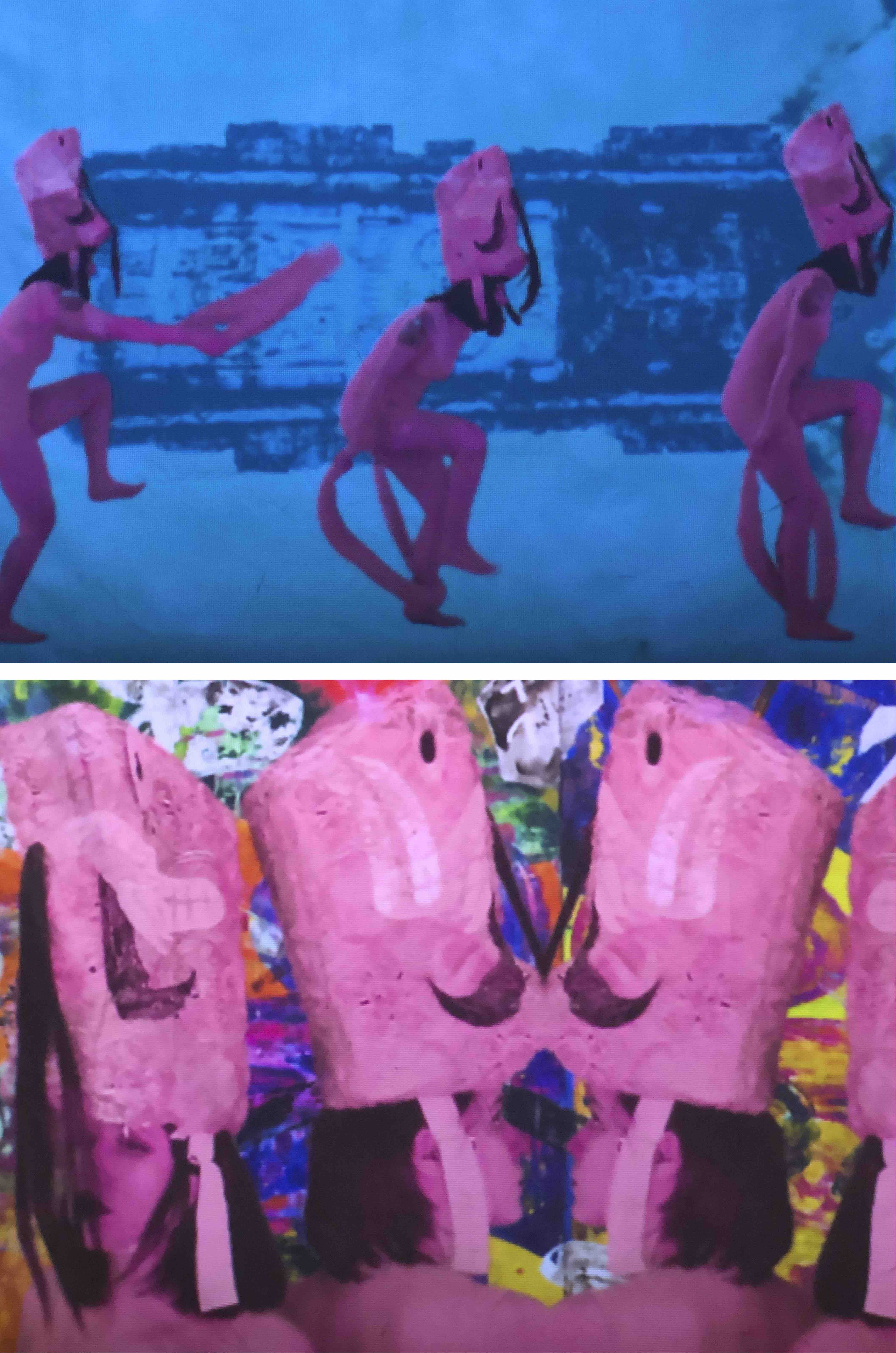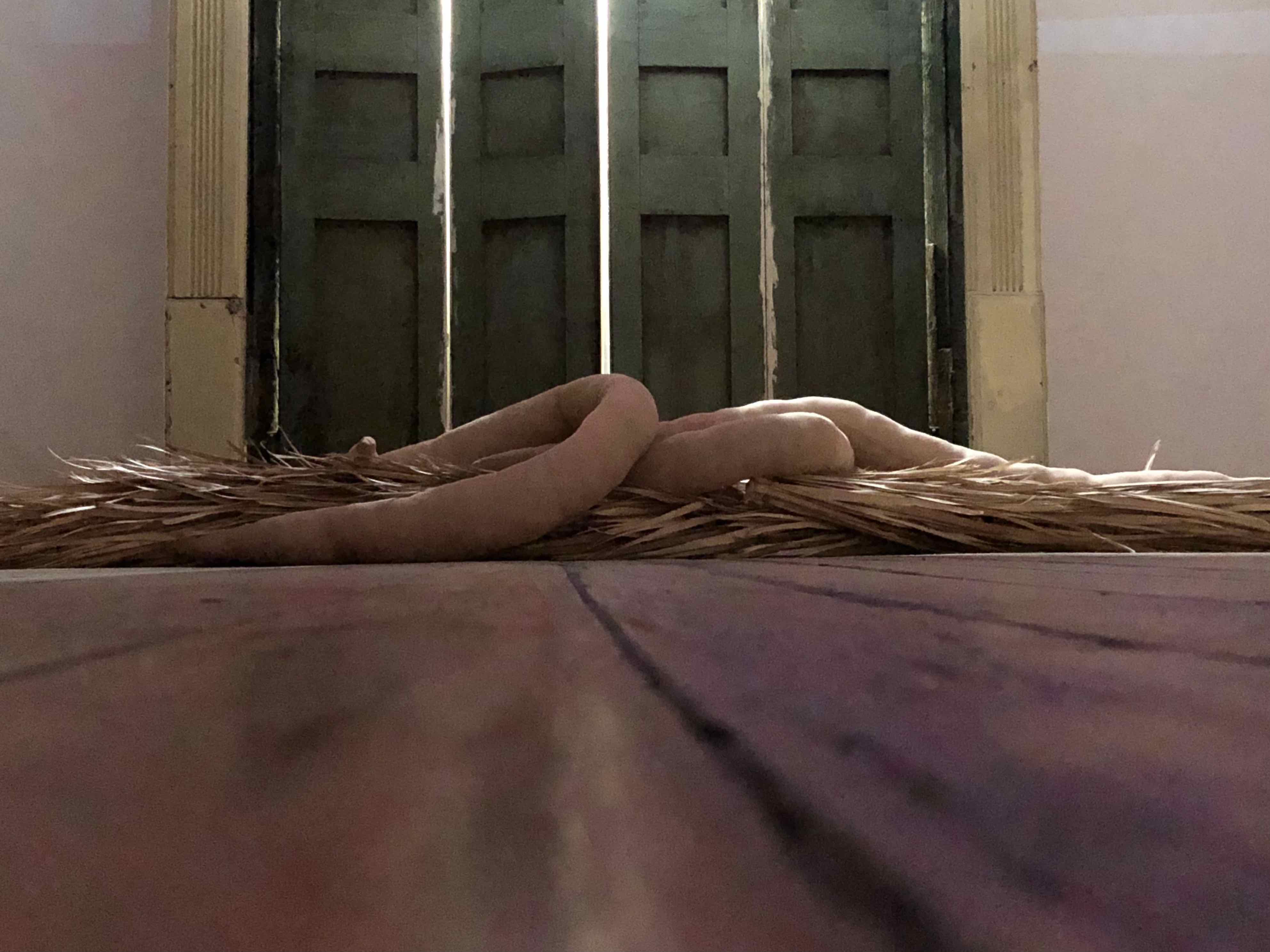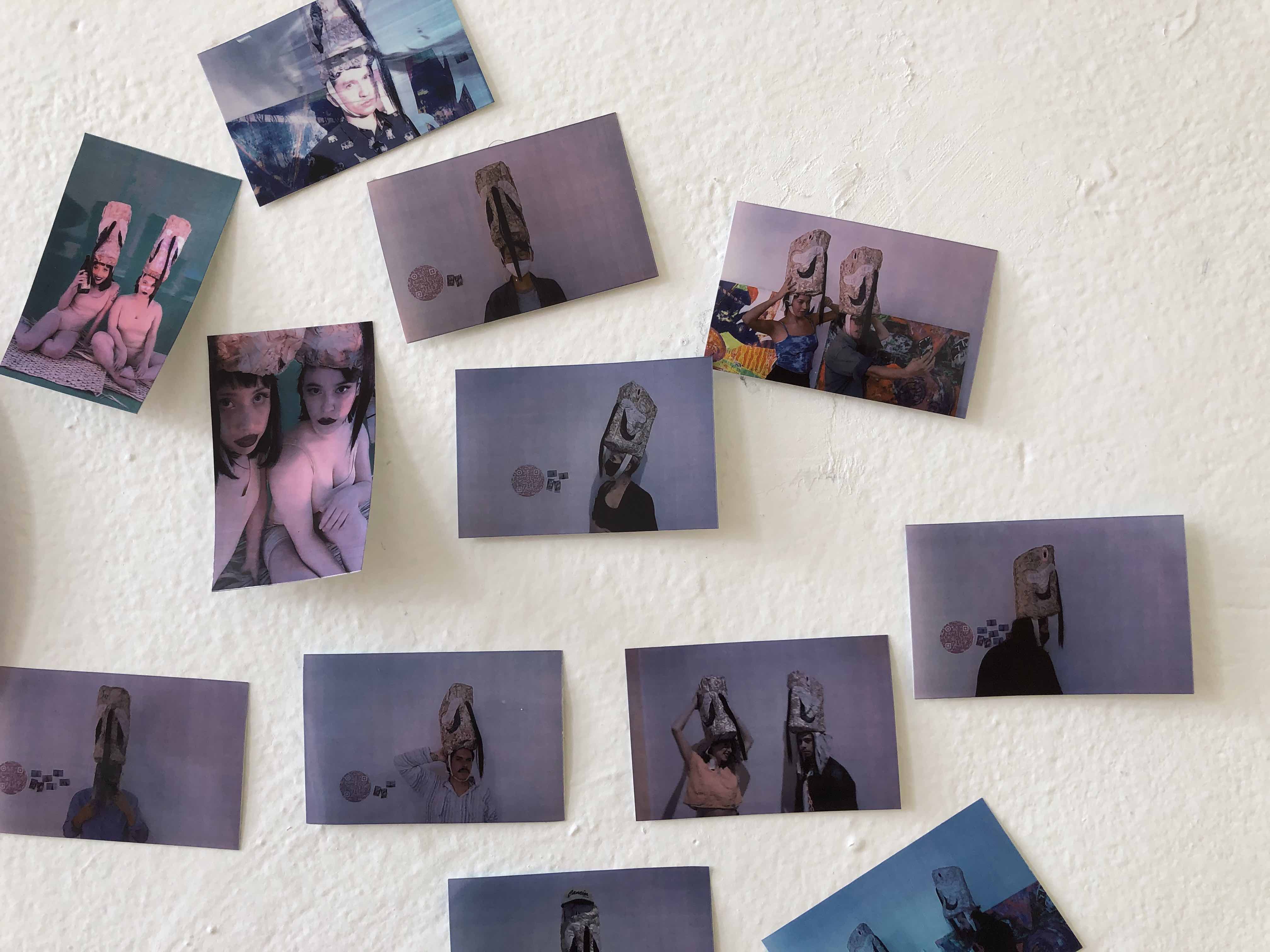
Review
Serpents, Eyes, and What Insists. Ileana Moreno's Kowatl
by Sandra Sánchez
At Estudio Marte
Reading time
4 min
As the video begins the performers are very attentive to the camera facing them. The movements of the two bodies, the pink costumes and hats made of fabric and plush emulating the head of the goddess Coatlicue, as well as the scenery, including paintings by Omar Mendoza, make up an assemblage designed to unfold in the viewers’ eyes, beneath the common logic of watching while knowing that they’re watching you back. Something like a tease or a spectacle.
Sun’s best friend (2021), by Ileana Moreno, shows the artist performing together with Cecilia Sordo in an audiovisual production “consisting of a song about friendship with the sun and the video of dancing serpents joining their heads like Coatlicue.” The Mexica goddess—associated with fertility, life, and death—was the goddess who gave birth to Huitzilopochtli (hence the connection with the sun), and her name means ”she with a skirt of serpents.”

However, rather than attempting to establish a relationship with past history and its details, the artist takes up the motifs of Coatlicue in order to explore her own narrative: a process of “self-incubation” in which “I am the serpent, we are the serpent”—linked to fire.[1] A look from up front seeks out an accomplice or a witness to participate in the festive self-determination ceremony taking place again and again, on a loop, inside a darkened room at Estudio Marte. Beneath the screen we see some of the costumes: fabrics that once contained the body before it shed its skin.

Recognition via the gaze of the other is constitutive of modern subjectivity: what we think of ourselves is filtered by what others think of us. However, it’s interesting that this first approach to the self dissolves as the video progresses. The performers begin dancing in complicity. Along the way, the face and gaze abandon the intentionality of the closeup in order to give way to the choreography, to the space built on movement, and to the music (by Lviiv) that coats everything.
This transition from gaze to ritual comes to a close with a scene on the beach in which the artist, no longer costumed, buries a red ball, flooded by sunlight, facing the horizon and the sea. She then presses her hand on the sand three times, leaving an irregular imprint. The symbol is visible but it belongs more to her and her action than it does to culture, language, and interpretation. Here we don’t have hermeneutics; only vibrations.
These three moments don’t produce an escalation or a climax, nobody wins or loses anything; thus, there are neither heroes nor supporting characters. We’re not facing a transactional story, but rather an action of shared self-legitimation, not only among the performers or with the viewers, but also with history as the survival of specters—insisting on and transforming themselves over time so as not to disappear. In the video, cultural forms (serpent’s head, Coatlicue) don’t precede identities but are chosen, even at non-regular intervals: not at every time, not for all time.
Upon moving from the darkness of the projection room to the light of the adjoining room, what opens up is the possibility of embodying the serpent: in front of three long fabrics sublimated with stills from the video are two pedestals and two hats. There are those who dared to put them on and even allowed themselves to be photographed. We see two different attitudes before the borrowed head; although the hat is the same, the whole body is what defines use, tempo, difference.

Moreno tells me that the hats occurred to her with the aim that every time someone put one on they would give body and life to Coatlicue. The play is joyful. Momentarily transforming oneself into an animal and a goddess, without thus being defined, or defining her… The success in the hats of using plush and ornaments together with the shape and color of roses consists in avoiding the solemnity of ritual in order to pass to the everyday, to the kitsch of haberdasheries and of the common. Dancing like goddesses, in pairs, multiplying limbs, looking in order no longer to look, doing what is incumbent on each one—in the act, not in its inheritance—in fragments, not in heavy normative narratives. Even transforming the name into an act of renewal, and, we must insist, of survival, the exhibition is thus titled Kowatl*2 y el mejor amigo del sol (“Kowatl and the sun’s best friend”).

Translated to English by Byron Davies.
Exhibition open by appointment until April 8.
*1 See gallery text.
*2 Kowatl refers to the phonetic sound of “Coatl”: serpent, twin.
Published on Apr 1 2021